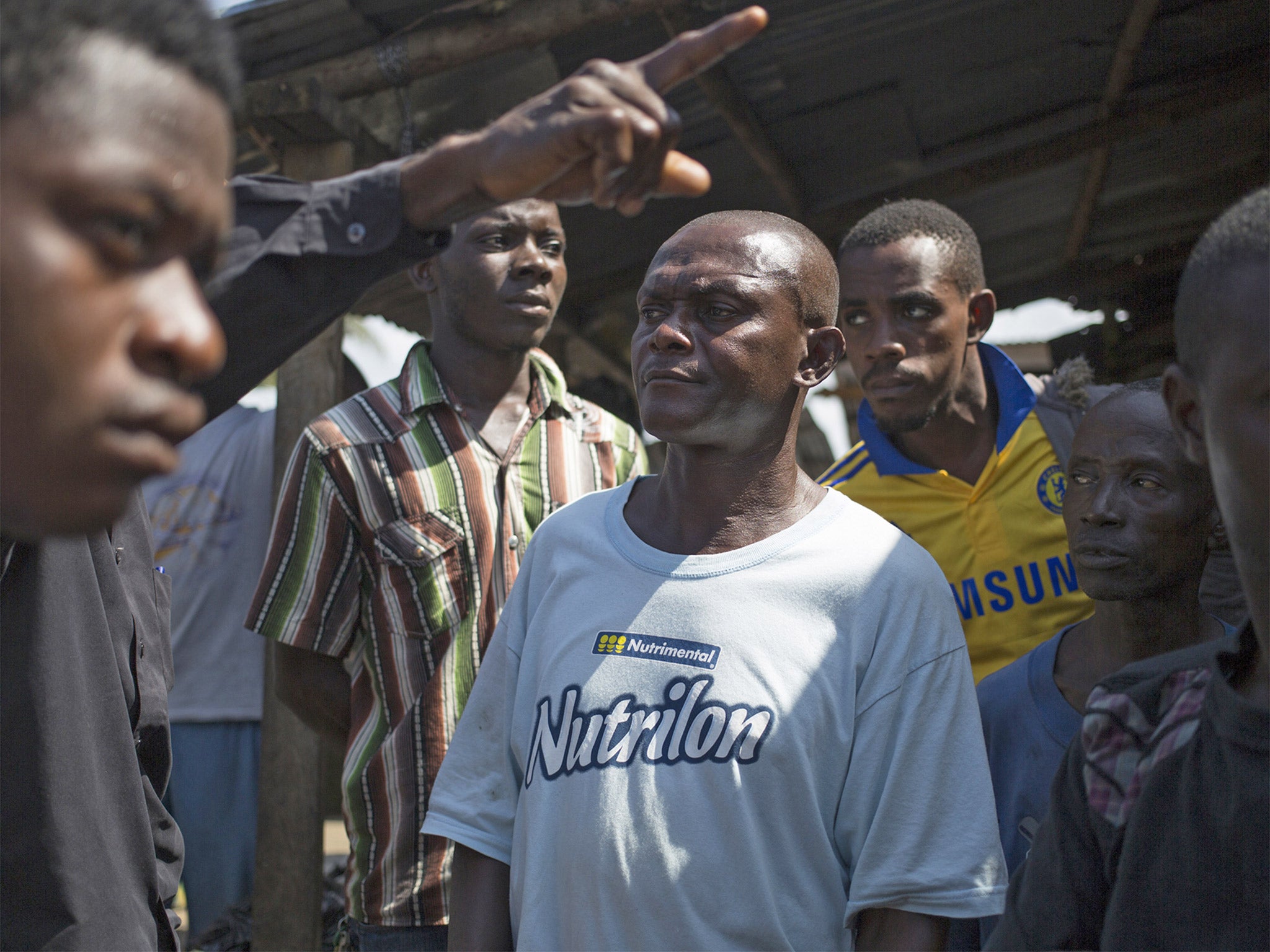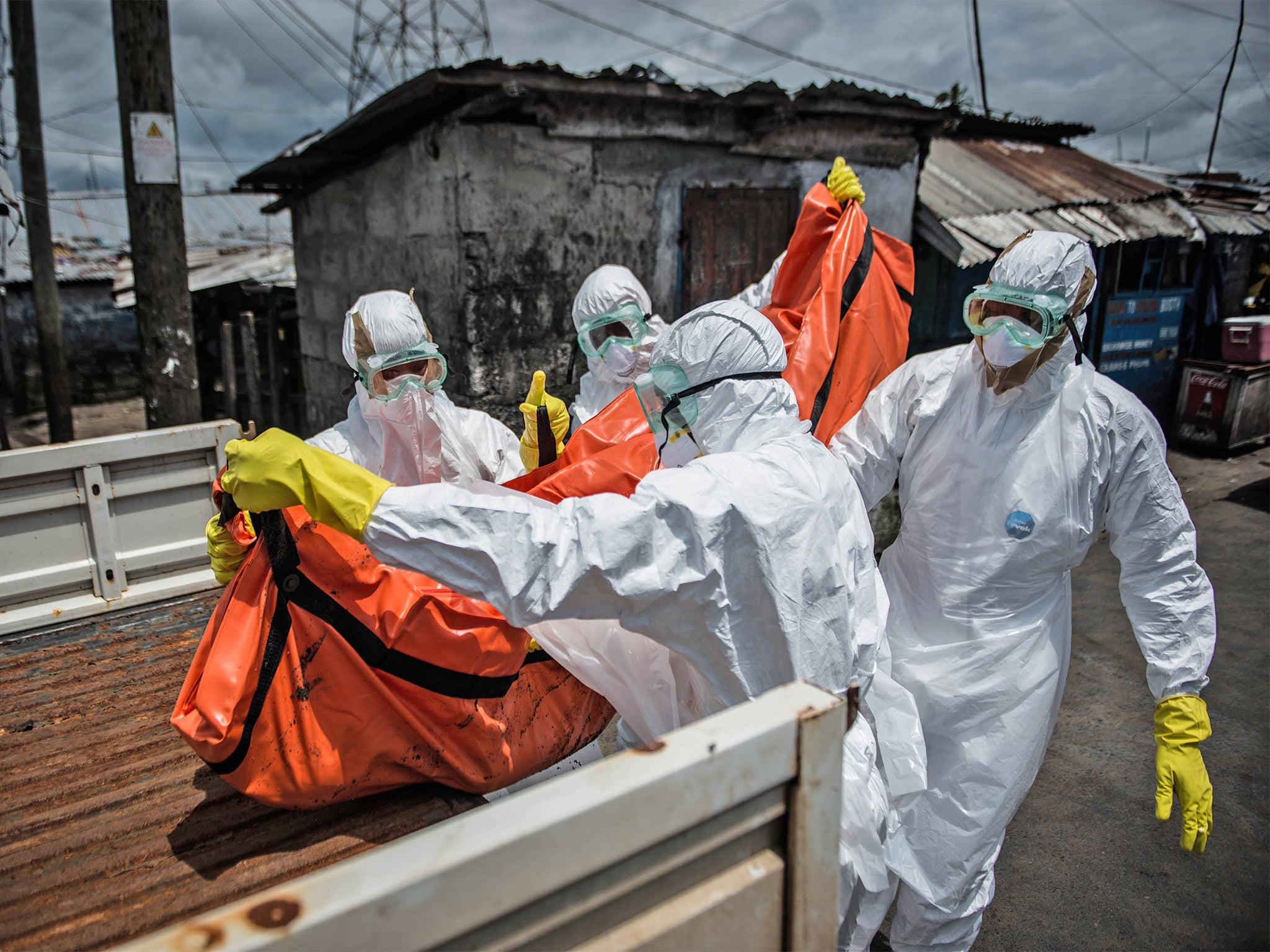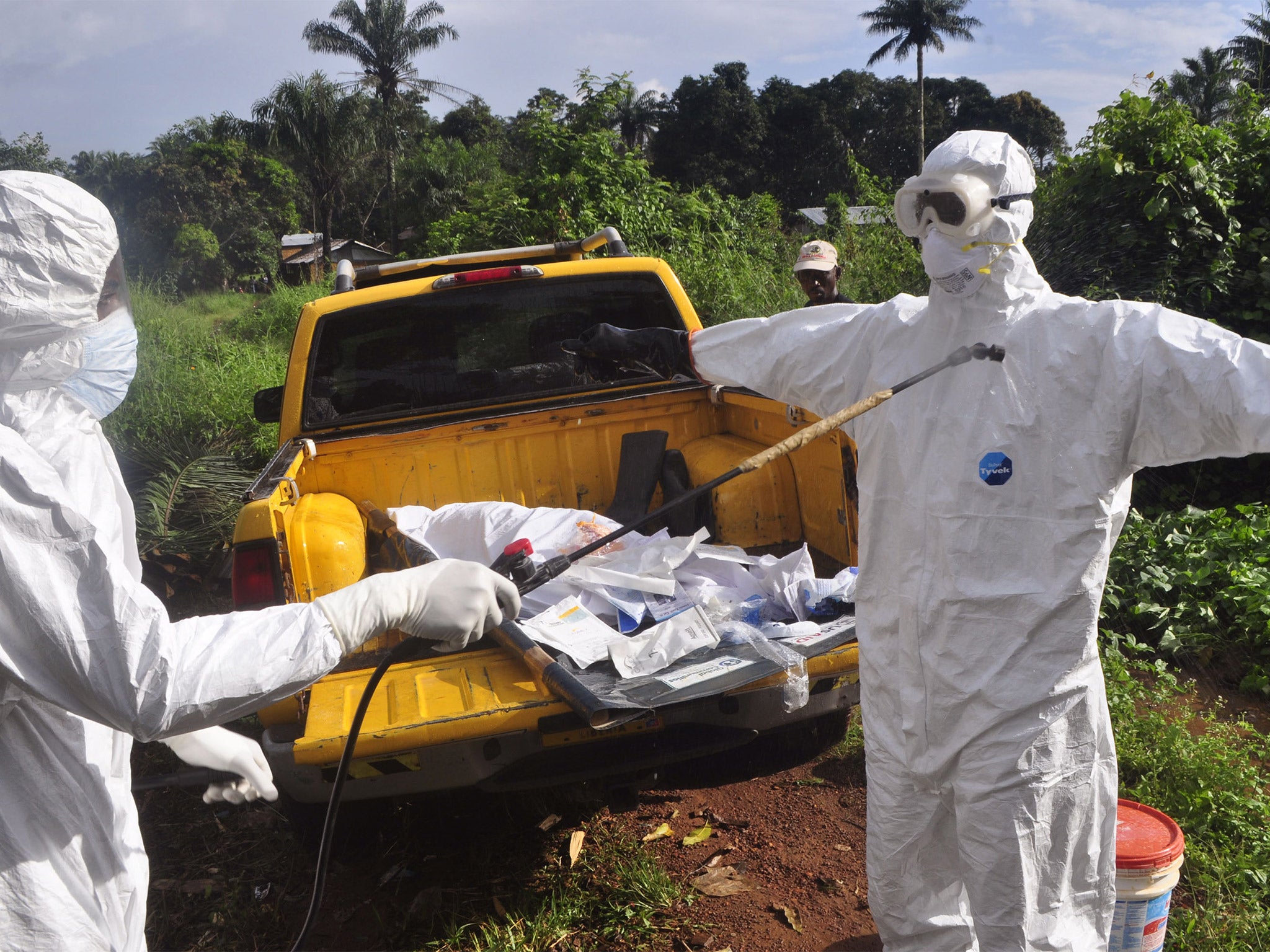Ebola outbreak: The contact tracers facing a race against time to track down those who have been exposed
It’s Bobby Pomney’s job to track down people who have come into contact with the virus – and isolate them. But in a slum where everyone fears being quarantined, it’s easier said than done

Your support helps us to tell the story
From reproductive rights to climate change to Big Tech, The Independent is on the ground when the story is developing. Whether it's investigating the financials of Elon Musk's pro-Trump PAC or producing our latest documentary, 'The A Word', which shines a light on the American women fighting for reproductive rights, we know how important it is to parse out the facts from the messaging.
At such a critical moment in US history, we need reporters on the ground. Your donation allows us to keep sending journalists to speak to both sides of the story.
The Independent is trusted by Americans across the entire political spectrum. And unlike many other quality news outlets, we choose not to lock Americans out of our reporting and analysis with paywalls. We believe quality journalism should be available to everyone, paid for by those who can afford it.
Your support makes all the difference.The two girls had nursed their mother as she died. They braided her hair until a truck came for the corpse. As Ebola leapt from house to house in the sprawling slum, it seemed inevitable that the girls, aged 12 and 13, would soon come down with the disease themselves. They would be the next links in an endless chain of transmission that was destroying New Kru Town, a suburb of Monrovia. And it was Bobby Pomney’s job to intervene.
Mr Pomney is a “contact tracer” for the Liberian government. When he arrived on a sweltering morning earlier this month, Mary Nyanford’s body was being driven away. Princess was screaming for her mother. Tears were running down Georgina’s cheeks.
“These girls need to be isolated,” said Mr Pomney, a slim, bald man, sweat beading on his forehead.
There may be only one way to halt the worst Ebola outbreak in history: find the disease’s victims, strictly quarantine them and monitor everyone with whom they interacted.
Contact tracing and enforcing quarantines in a place like New Kru Town is fraught with difficulties. Everything is shared: mattresses, toilets, food, the burden of caring for the ill. Mr Pomney, 43, was from a slum himself, and he knew the odds he would face as he kept watch over the two little girls.
New Kru Town is a maze of sheet-metal shanties built on a small peninsula, about a mile long and a half-mile wide, that juts into the Atlantic. Depending on who you ask, the population is 20,000 or 50,000. It’s a place with open sewers and swarms of mosquitoes that seems as if it was constructed to facilitate the spread of disease. It is an overwhelmingly difficult place to do contact tracing.
“I know this is my job,” Mr Pomney said later. “But I don’t think it works here.” The day after Ms Nyanford’s body was carried away, Mr Pomney returned with a clipboard and rain boots. He started writing down the names of people who had physical contact with her while she was sick.
Some people he visited wouldn’t give their names. Others denied that they had been around Ms Nyanford, apparently to avoid being ordered into the 21-day quarantine, even though it was not enforced. “You all want to quarantine us, but how are we going to eat?” asked Cleo Tobar.
Ebola had been raging across Liberia for seven months. In the country’s infected areas, quarantine means not socialising with other people. No sharing food. No sharing a bathroom. Ebola is spread through the bodily fluids of highly infected people.
Scientists use formulas to map Ebola’s transmission vectors and its exponential infection rate. But New Kru Town is a place where you can watch the virus’s web grow outward in real time.
Every day that Mr Pomney returned, he was approached by someone reporting a new case: a corpse that had been left on a mattress for three days until it started to decay; the body of an 11-month-old boy; a young man with a high fever who sat zombie-like in front of his house. “This whole area is infected,” he said.
Mr Pomney was left with hardly any contacts to trace, except for the two little girls whom everyone watched, waiting for symptoms to emerge.
Days later, Mr Pomney sighed and walked to a home pointed out by another slum resident. Another member of the contact tracing team, John Shagbeh, joined him. When they got to the house, a few yards from where Ms Nyanford had died, a man in his early 20s was sitting, staring blankly.
“This guy needs to go to the hospital,” Mr Shagbeh said. “We went to the doctor. He said it’s yellow fever,” the man’s mother said.
The contact tracers didn’t believe her. Many people in New Kru Town are desperate to avoid Ebola treatment centres, which they see as dangerous.
“If you don’t go to the hospital, we will call the police on you,” Mr Shagbeh shouted. “You need to accept that this man is infected.”

In Nigeria, where there were 20 confirmed or probable cases of Ebola in July, tracers created a list of 894 contacts of the patients, and isolated and monitored them. Health workers conducted 18,500 face-to-face visits.
Last week, the country was declared Ebola-free.
But in Liberia, where more than 4,600 people have been diagnosed with the disease since March, improvised contact-tracing teams were formed only after Ebola had spread widely.
There could be tens of thousands of contacts scattered across slums like New Kru Town. The country’s public health system was almost nonexistent even before Ebola.
In the United States, many contact tracers have advanced degrees in public health. In Liberia, they are former students or shopkeepers or security guards. Until June, Mr Pomney sold stationery.
Liberia’s contact tracers are supposed to make daily checks on victims’ friends, relatives and neighbours, beginning as soon as the cases are identified. But in New Kru Town, the tracers said, it typically takes about 10 days before the process even begins. By that time, more people have typically developed symptoms.
“You can’t quarantine people here. We’re all intertwined,” said Aloysius Nimely, the pastor of Garden Street Temple Bible Wheel Church.

As families attended church services, Mr Pomney was running between houses. In three hours, he had heard about three new bodies. His job is not to remove the dead, but he was the only representative of the Liberian government in the slum, and he decided he had to do something.
He called the body-collection team. He waited with the families. He took out his clipboard and tried to diagram the web of physical contacts orbiting the deceased. Each time, he got a few names, and then he gave up. The circles were too wide. There were too many people who didn’t want to give their names or didn’t want to admit that they had had contact with the dead.
Exactly one week after Ms Nyanford’s body was driven away, Mr Pomney walked by Princess and Georgina, who were sitting in a circle with relatives.
“It’s only a matter of time,” he said. “One day, they’re going to get it.”
© Washington Post
Join our commenting forum
Join thought-provoking conversations, follow other Independent readers and see their replies
Comments